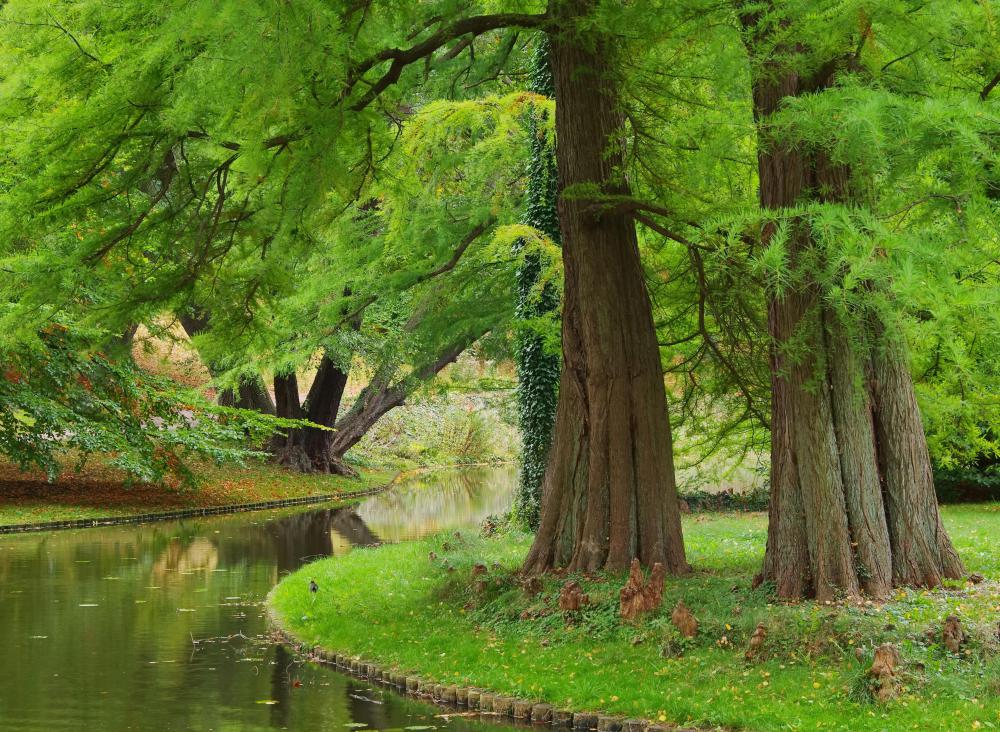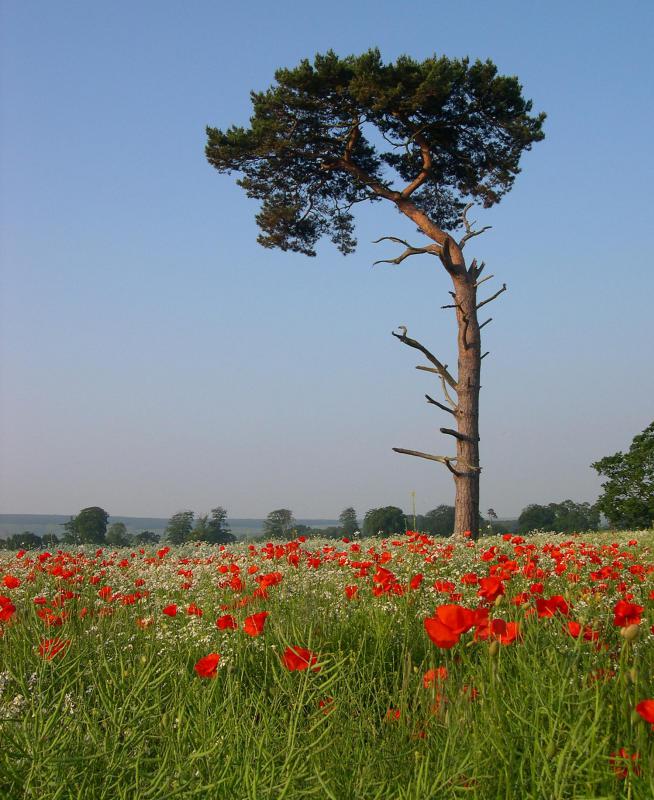At HomeQuestionsAnswered, we're committed to delivering accurate, trustworthy information. Our expert-authored content is rigorously fact-checked and sourced from credible authorities. Discover how we uphold the highest standards in providing you with reliable knowledge.
What are the Different Types of Redwood Trees?
There are eight different kinds of redwood trees that fall into four families, two of those families being conifers and two being broadleaf. The first family of redwood trees that we will cover is the largest family, the Family Cupressaceae. The Family Cupressaceae is populated by conifers and is made up of four distinct trees. The Sequoia sempervirens, also known as the "Coast Redwood;" the Metasequoia glyptostroboides or the "Dawn Redwood;" and the Cryptomeria japonica, which is more commonly called the "Sugi" are all redwood trees in the coniferous Family Cupressaceae. There is a fourth tree in this family. The fourth tree is the Sequoiadendron giganteum, which goes by two different names. It is called both "Giant Sequoia" and "Sierra Redwood."
The second coniferous family of redwood trees is the Family Pinaceae. This family only includes one redwood tree, the Pinus sylvestris. The Pinus sylvestris is called the "Scots Pine." In the timber business, this tree is simply referred to as "redwood."

Now we come to the two broadleaf family of redwood trees, neither of which are as large as the Family Cupressaceae. The Family Fabaceae includes only two redwoods. The Family Sterculiaceae, like the coniferous Family Pinaceae, only includes one redwood. Within the Family Fabaceae are the Caesalpinia sappan, which is also known as the "East Indian Redwood" or "Sapanwood tree," and the Caesalpinia echinata, which is known as both the "South American Redwood" and the "Brazilwood tree." In Europe, the Caesalpinia sappan is also sometimes referred to as "brezel wood." The second broadlead family of trees, the Family Sterculiaceae, includes the Trochetiopsis erythroxylon, which is more commonly known as the St. Helen Redwood.

As you can probably guess by the names, redwood trees are found in many places around the globe. The Brazilwood tree, for example, is native to Brazil. The Giant Sequoia, for another example, grows primarily in California. It is known also as the "Sierra Redwood" because it primarily grows in the western Sierra Nevada mountain range within the state of California. Because the tree is considered to be endangered, it has been cultivated in Europe, Canada, Australia, and New Zealand.

The Sugi tree, however, is native to Japan. Although it is not a member of the cedar family, the Sugi is sometimes called "Japanese Cedar." The Scots Pine can be found in many places around the globe including Ireland, Great Britain, Siberia, and Portugal.
AS FEATURED ON:
AS FEATURED ON:
















Discussion Comments
After cutting down (by a tree service) my 70 ft approx redwood to a six inch stump, can I expect the roots to continue to grow? Help!
I have planted hundreds of redwood trees and have started my own "forest", mostly starting from suckers I have cut from other redwoods.
However, I can tell you based on looking at it,I have collected at least seven different species of coast redwoods. I would love to know the names of each of them. Two I have purchased and they are the common Aptos Blue and Santa Cruz variety. The rest? I have no idea.
I would really like to know where I can find info on every different species that live on the CA coast. If I found eight different ones in one small area, surely there may be more.
One of the most memorable experiences of my childhood was going to see the Yosemite redwood trees -- those things are incredible!
Even though I was young at the time, I still remember how enormously large those things were -- the thing that really made it stick out in my mind was seeing how small my dad looked next to them, since you know how it is when you're young, you think your dad is the biggest thing in the world.
It was really such a fascinating experience, and I was shocked to think of how long those redwood trees had been growing. It really does make you feel kind of small, no matter what size you are, when you're put up against something that big.
For those of you who have never been out to see those giant redwoods, I would definitely say it's one of the things you need to do before you die -- it's such an inspiring experience, and it will stay with you for the rest of your life.
Thanks so much for this article -- my daughter remembered at the last minute that she had a project due tomorrow on redwood tree facts, and you know how that goes. Whenever you're desperately in need of information, it's almost impossible to find.
But this article was really very helpful, and gave us a good overview of the whole redwood tree species in general, not just the redwood trees in CA, which is what all the other sites tend to do.
Thanks for providing a new and interesting take on the subject -- it really helped us out. I will definitely be referring to this site for future projects.
This was such an informative article. I had thought for some reason that redwood trees only grew in the American west, because you always see pictures of the Yosemite redwood trees and the redwood tree parks in CA.
I had no idea that there were actually regular redwood forest trees, much less that they grew in so many places. I wonder, do the redwood trees in Europe get as large as the really big redwood trees in the American West, or are they different? I'll have to look it up.
Thanks for sparking my interest -- this really was a very interesting article!
Post your comments